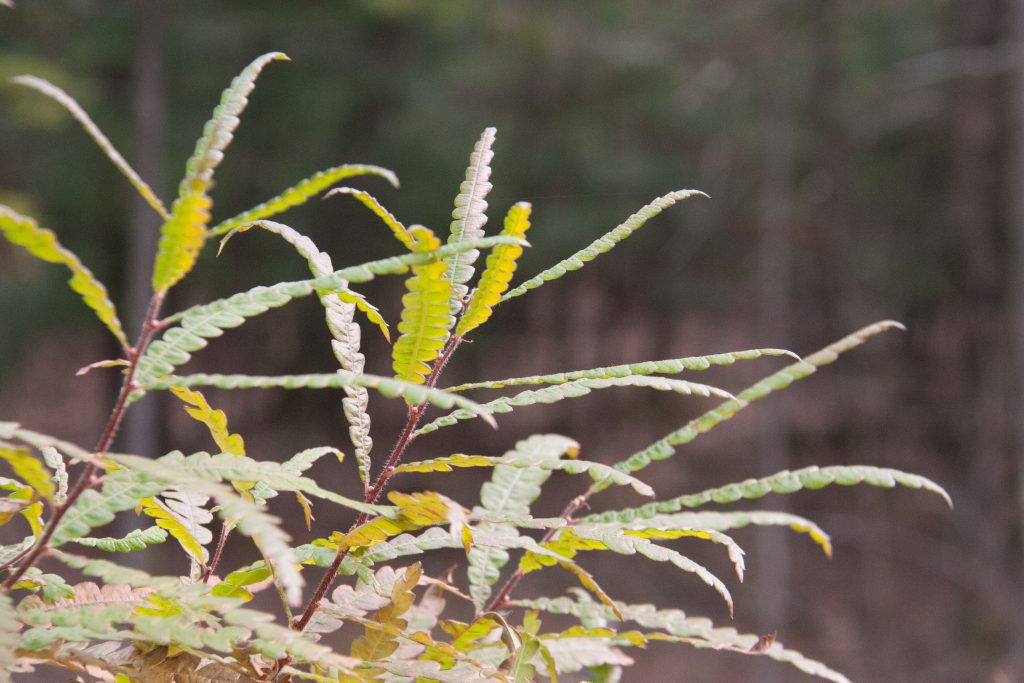
I grew up going to summer camp in the White Mountains of NH, where the dirt roads and trails were bounded by sweet fern. To this day, it’s my madeleine. Whenever I smell sweet fern, I think of Camp Huckins and nine summers on the shores of Lake Ossipee.
Sweet fern isn’t actually a fern, but that’s one of the problems with common names…they take liberties. It is, however, very sweet. Its foliage is packed with so much fragrance that you don’t even need to rub the leaves to release the scent. The heat of the summer sun beating down on the leaves releases the unmistakable smell of sweet fern into the surrounding air.
Sweet fern grows best in sandy soils that are low in nutrients. Extremely cold hardy, sweet fern flourishes in zones 2 – 6. You may read that sweet fern is difficult to transplant, but I disagree. I think the problem occurs when gardeners move sweet fern into rich, nutritious garden soil, or heavy, clay soils. I’ve transplanted sweet fern with excellent success, as long as I keep it in full to part sun and an acid, fast-draining soil (preferably sandy). Resist the temptation to fertilize! Grown this way, sweet fern will spread nicely but not thuggishly.
Any time I meet a plant with a strong fragrance, I think about how to capture that fragrance in food and drink. Most people seem to use sweet fern for tea, but I often find herbal teas to be too delicately flavored for my taste. Give me something with heft, with strong flavor, because I want more!
Choose flexible, unblemished foliage for your harvest, cutting off branches just above a node. In the kitchen, strip the leaves off the branches. Sweet fern has a strong scent, but its flavor is mild, green, and earthy. Many foragers and herbalists say you can use the leaves either fresh or dry, but I think fresh foliage has more flavor. Plus, the one time I made tea from dried leaves it was unpleasantly bitter. I should probably try it again, but since I’m not much of a tea person, I can’t promise it’ll be any time soon.
I’d much rather stuff a trout with sweet fern foliage to infuse the fish with flavor. Or infuse a bottle of rye with sweet fern to make a woodsy cocktail. Sweet fern also makes an excellent rub for meat and fish.
Love sweet fern (Comptonia)!
I had issues transplanting but think using nutrient-rich sandy soil was my problem. Will try again in a perfect spot.
So few people appreciate this plant! Good luck with the transplanting. I’ve done it before and you’re right, sweet fern does not appreciate a nutrient rich soil, although the sandiness should be good.
Interesting! My guess is most people come here for the food. I know there’s a lot of overlap between the wild edible plant people and the herbal medicine people, but since I’m not an herbalist, the focus here is definitely on the edible side. But thanks for sharing.